Sigma C 18-200 mm f/3.5-6.3 DC Macro OS HSM
3. Build quality and image stabilization
In the photo below the tested lens is positioned next to the fixed focal Sigma A 1.4/35 designed for full frame.
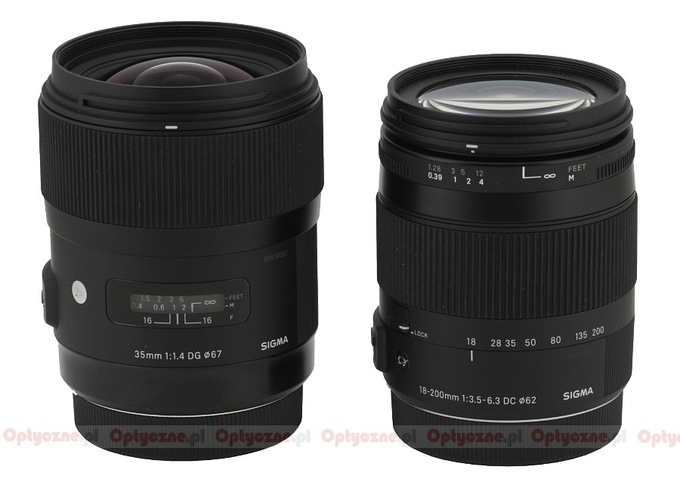 |
Please Support UsIf you enjoy our reviews and articles, and you want us to continue our work please, support our website by donating through PayPal. The funds are going to be used for paying our editorial team, renting servers, and equipping our testing studio; only that way we will be able to continue providing you interesting content for free. |
- - - - - - - - - - - - - - - - - - - - - - - - - - - - - - - - - - - - - - - - - - - - - - - -
The tested lens starts with a metal mount which surrounds contacts and a rear element, almost 21 mm in diameter. That element is situated on the same level as the mount at 18 mm and it hides inside the inner tube almost 5 centimeters deep when you pass to 200 mm. The interior is quite well blackened but still you can easily spot here and there small electronics parts.
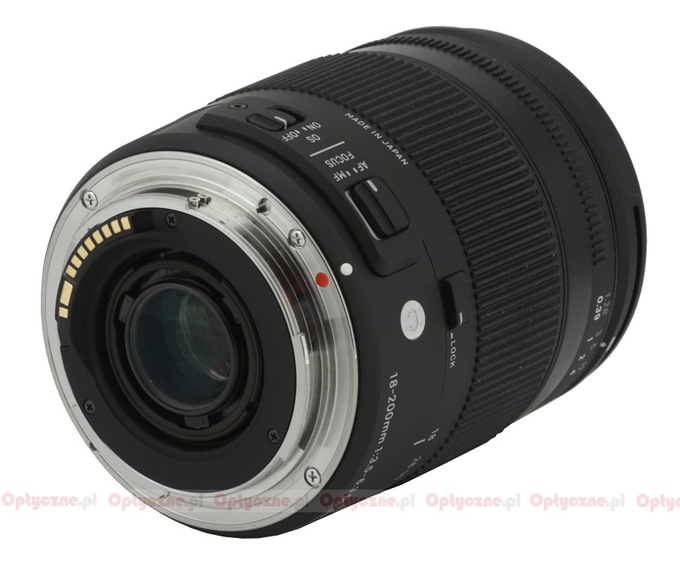 |
The proper body of the lens starts with an immobile ring, 29 mm wide, on which you can find an inscription with the name and the parameters of the lens. On the left side of that inscription (when looking from the above) there is a ‘C’ mark (meaning the Contemporary series), a white dot, making the alignment with a camera easier, a focusing mechanism mode switch (AF/MF) and a stabilization switch (OS ON/OFF).
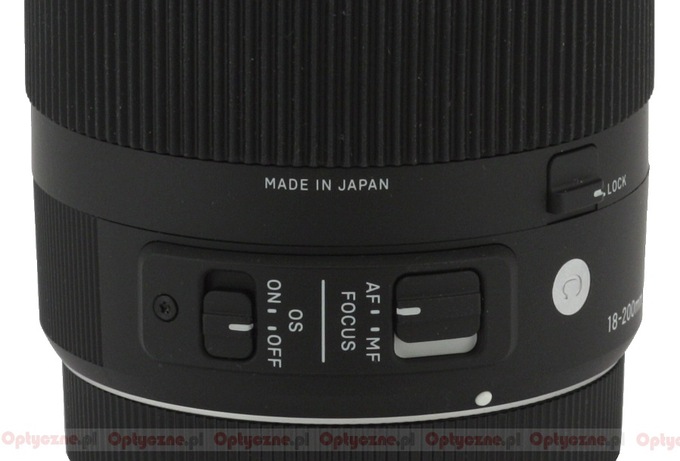 |
The next part is a zoom ring, as wide as 35 mm. Most of it is occupied by rubber ribs under which there are focal length markings at 18, 28, 35, 50, 80, 135 and 200 mm, an inscription “Made in Japan” and a Lock switch which blocks the lens at 18 mm focal length. Still the lens is so well build that the switch seems to be needless – even if you point the device downwards and you wave the camera it is attached to quite vigorously there is no zoom creep effect.
The ring itself moves with a quite significant resistance, which is slightly lower in the 18-28 and 135-200 mm ranges.
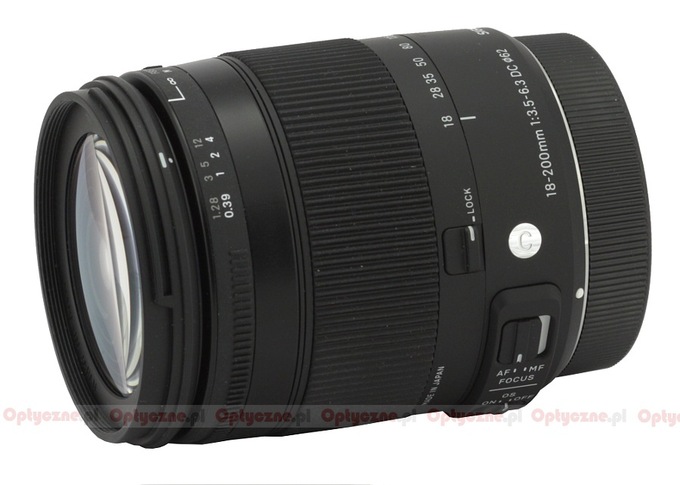 |
Further on you see a manual focus ring, 15 mm wide, with a distance scale expressed in feet and meters and a rubber ribbing. The ring can be moved only in the MF mode. Running through the whole distance takes a turn through an angle of just 40-45 degrees – such a low value makes it rather a dummy than a fully useful tool.
The lens ends with a hood mount which surrounds a non-rotating filter thread, 62 mm in diameter. The front element of the lens is 48 mm in diameter and around it you can find a part of the casing with the name and parameters of the lens, along with an inscription “Made in Japan”.
When you pass from 18 to 200 mm the front element system extends on a telescopic tube, made of plastics. It is quite stable and has no side play. Still that way the dimension of the lens increases from 85 mm to 147 mm.
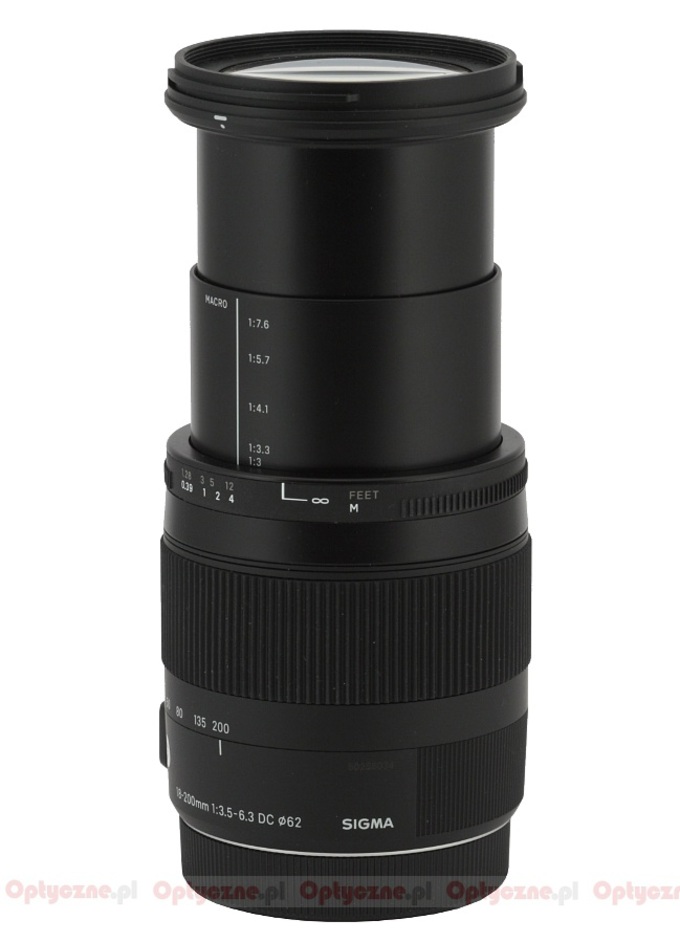 |
When it comes to the optical construction you deal here with 16 elements positioned in 13 groups. As many as four elements were made of low-dispersion SLD (Special Low Dispersion) glass and three others are aspherical. Inside you also find an aperture with seven diaphragm blades which can be closed down to a value of f/22. What’s interesting it doesn’t depend on the focal length value.
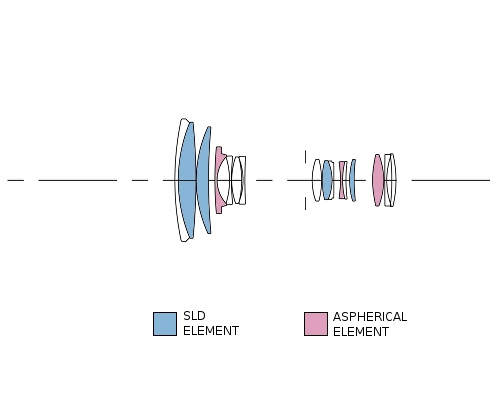 |
Buyers get additionally two caps and a petal-type hood in the box.
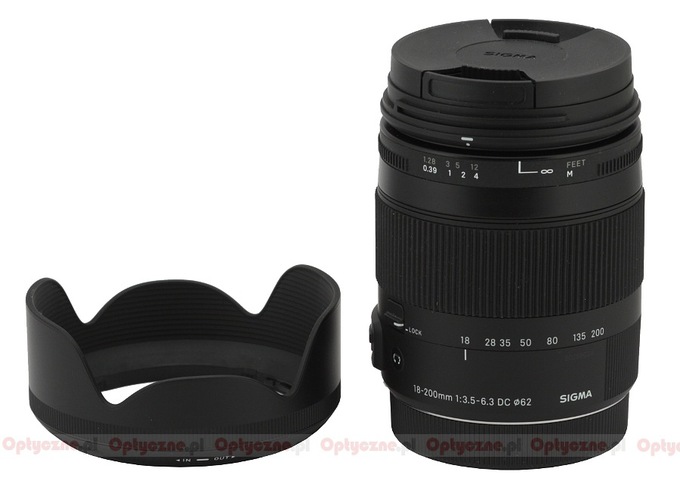 |
Image stabilization
The Sigma stabilization test was conducted at 200 mm focal length. For every exposure time in the range from 1/250 to 1/5 of a second we took several dozen photos with the stabilization switched on and off. Then we determined the percentage of blurred photos for every exposure time and presented it as a function of that time, expressed in EV, with the 0 EV point corresponding to 1/200 of a second.
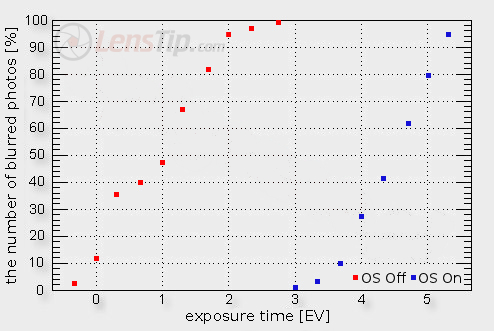
The maximum distance between two curved, presented on our graph, is the measure of stabilization efficiency. In that case it amounts to over 3.5 EV which, for an amateur lens, is a really praiseworthy result. It’s worth reminding here that the predecessor of the tested lens got a result of less than 3 EV. The increase of stabilization efficiency by about 0.7-0.9 EV is a noticeable improvement.






